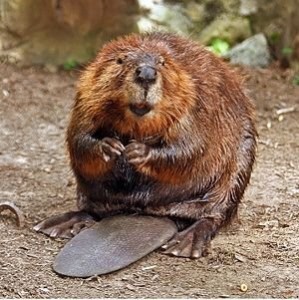
(gunscoffee.blogspot.com)
Sometimes, you just don’t want the same old venison/elk burger meal for dinner. So…why not try something a little different?? Okay, A LOT different! (If you have kids, just don’t tell them what it is! ;-D)
This recipe is great for trappers, mainly because they might already have a beaver tail from one of their recent catches. For others, talk to your trapper friends, and see if they can hook you up with a few beaver tails… I will say that the few people I have talked to that have tried beaver tail, I was told they haven’t been able to find a recipe to make it worth eating, so THIS might be the one to try! Remember–don’t dis it til you try it! (Hey, I’m being optimistic..)
Fried Beaver Tail
- 2 Beaver tails
- 1/4 ts Pepper
- 1/2 c Vinegar
- 1/4 c Butter
- 1 tb Salt
- 1/4 c Sherry or cooking wine
- 2 ts Soda
- 1 ts Dry mustard
- 1/4 c Flour
- 1 ts Sugar
- 1/2 ts Salt
- 1 tb Worcestershire sauce
Skin beaver tails, clean thoroughly and wash well in a solution of salt water. Let soak overnight in cold water to cover, adding 1/2 cup vinegar and 1 tablespoon salt to water.
The next day, remove from the brine, wash, then cover with solution of 2 teaspoons soda to 2 quarts water. Bring to a boil, reduce heat and simmer 10 minutes. Drain.
Dredge beaver tails in seasoned flour.
Melt butter in heavy fry pan and saute tails at low heat until tender.
Mix wine with mustard, sugar, garlic powder and Worcestershire sauce.
Add to beaver tails and simmer gently for 10 minutes, basting frequently.
From “Northern Cookbook” edited by Eleanor A. Ellis, Indian Affairs and Northern Development, Ottawa 1973.
A note received from Jimm Gordon:
Born and raised in the Big Belt Mountains of Montana, every winter fried beavertail was a culinary treat that would grace our table on a weekly basis. I was tickled to see a recipe for it in your bizarre foods section, but noted one area of the recipe that I thought needed clarification. One does not, in the usual fashion, “skin” a beavertail. The thick, scaley hide adheres too tightly to the gristly flesh for that to be a good option. Oldtime beaver eaters had a little trick that made getting the hide off a snap.
Stick a barbecue fork into the “meat” end of the beavertail, then “toast” it like a marshmallow over the woodstove or electric burner or other heat source. As it toasts, the hide puffs away from the meat like a slowly expanding balloon. After a few minutes you can strip it away and trim the edge, leaving you with a nice filet of greasy pink/white meat for your recipe.
The smell is not charming, but it’s not as bad as some things. And the taste (and saved work) is worth it. Just thought I would share that tip.
Jimm Gordon
(Recipe via bertc.com; Photo: courses.washington.edu)